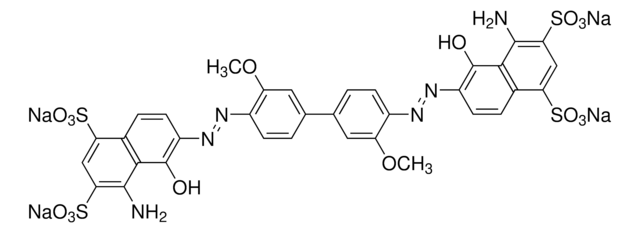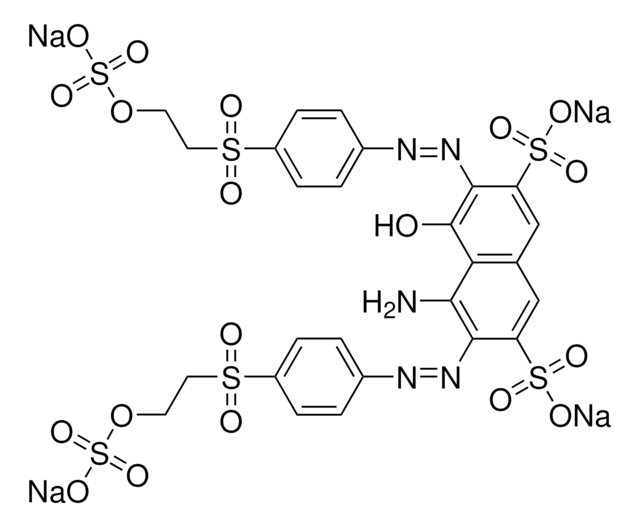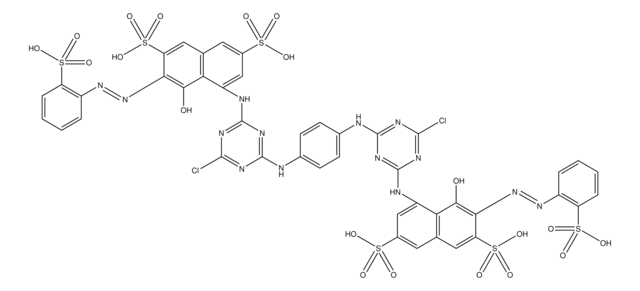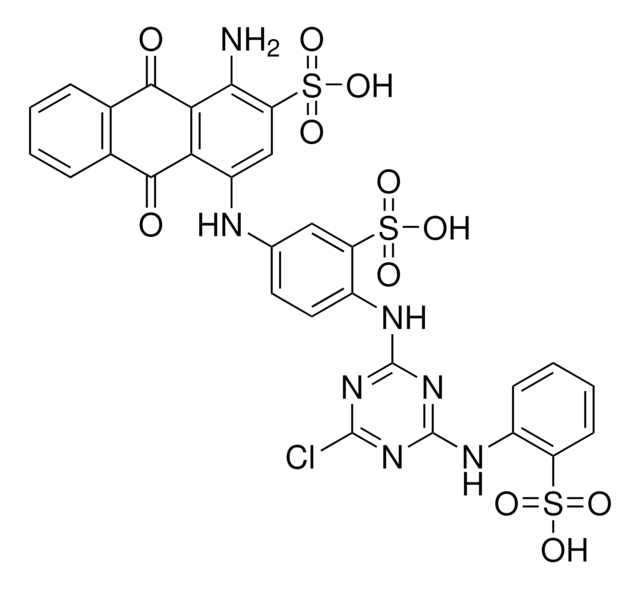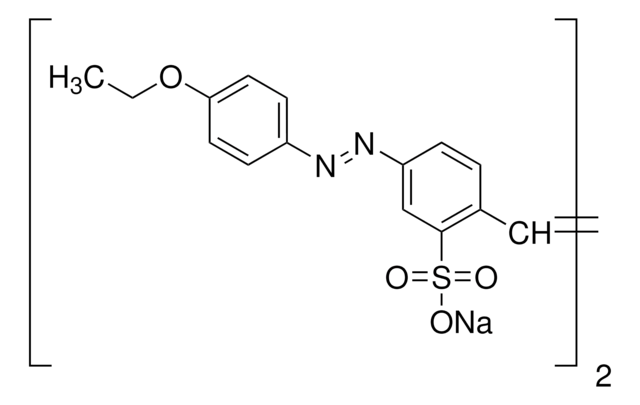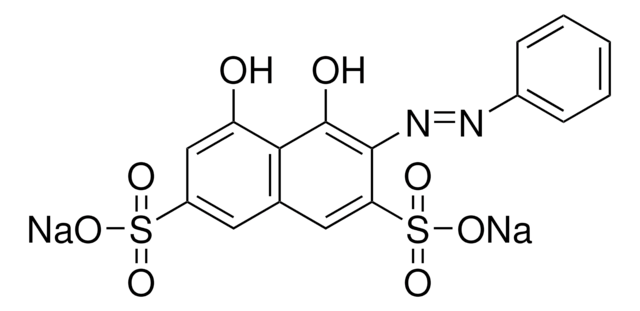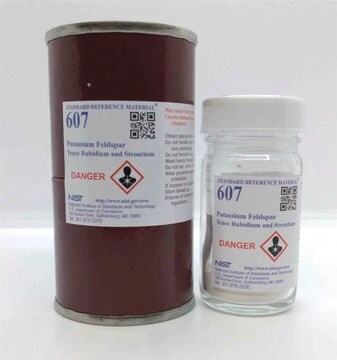D2535
Direct Blue 15
suitable for Histopaque® system, Powder
About This Item
Polecane produkty
product name
Direct Blue 15, suitable for Histopaque® system, suitable for viability studies of collagenase-treated rat liver cells
opis
suitable for Histopaque® system
Poziom jakości
Postać
powder
skład
Dye content, ~44%
kolor
dark blue
rozpuszczalność
water: 10 mg/mL, clear, blue
przydatność
suitable for viability studies of collagenase-treated rat liver cells
Zastosowanie
diagnostic assay manufacturing
hematology
histology
temp. przechowywania
room temp
ciąg SMILES
[Na+].[Na+].[Na+].[Na+].COc1cc(ccc1N=Nc2c(O)c3c(N)cc(cc3cc2S([O-])(=O)=O)S([O-])(=O)=O)-c4ccc(N=Nc5c(O)c6c(N)cc(cc6cc5S([O-])(=O)=O)S([O-])(=O)=O)c(OC)c4
InChI
1S/C34H28N6O16S4.4Na/c1-55-25-9-15(3-5-23(25)37-39-31-27(59(49,50)51)11-17-7-19(57(43,44)45)13-21(35)29(17)33(31)41)16-4-6-24(26(10-16)56-2)38-40-32-28(60(52,53)54)12-18-8-20(58(46,47)48)14-22(36)30(18)34(32)42;;;;/h3-14,41-42H,35-36H2,1-2H3,(H,43,44,45)(H,46,47,48)(H,49,50,51)(H,52,53,54);;;;/q;4*+1/p-4
Klucz InChI
OLSOUGWNONTDCK-UHFFFAOYSA-J
Szukasz podobnych produktów? Odwiedź Przewodnik dotyczący porównywania produktów
Zastosowanie
Informacje prawne
Hasło ostrzegawcze
Danger
Zwroty wskazujące rodzaj zagrożenia
Zwroty wskazujące środki ostrożności
Klasyfikacja zagrożeń
Carc. 1B
Kod klasy składowania
6.1C - Combustible acute toxic Cat.3 / toxic compounds or compounds which causing chronic effects
Klasa zagrożenia wodnego (WGK)
WGK 3
Temperatura zapłonu (°F)
Not applicable
Temperatura zapłonu (°C)
Not applicable
Wybierz jedną z najnowszych wersji:
Certyfikaty analizy (CoA)
Nie widzisz odpowiedniej wersji?
Jeśli potrzebujesz konkretnej wersji, możesz wyszukać konkretny certyfikat według numeru partii lub serii.
Masz już ten produkt?
Dokumenty związane z niedawno zakupionymi produktami zostały zamieszczone w Bibliotece dokumentów.
Klienci oglądali również te produkty
Nasz zespół naukowców ma doświadczenie we wszystkich obszarach badań, w tym w naukach przyrodniczych, materiałoznawstwie, syntezie chemicznej, chromatografii, analityce i wielu innych dziedzinach.
Skontaktuj się z zespołem ds. pomocy technicznej


